Ever scratched your head wondering how to make a blockchain game? You’re not alone. Blockchain gaming is booming, with over $2.5 billion invested in the sector in 2022. This guide will walk you through 8 key steps to create your own crypto game.
Ready to level up your game dev skills?
Key Takeaways
Blockchain gaming is booming, with over $2.5 billion invested in 2022. It offers true ownership of in-game assets and player-driven economies.
Key steps include market research, choosing a blockchain platform like Ethereum or EOSIO, and using SDKs like Third Web CLI for development.
Essential features are NFTs for in-game items, decentralized marketplaces for trading, and giving players real ownership and control.
Best practices involve ensuring scalability and security, engaging the community early, and continuous testing and iteration.
Advanced topics include using Layer 2 solutions for better performance, managing cross-chain interactions, and utilizing AI for dynamic game content.
Table of Contents
Exploring Blockchain Technology in Gaming
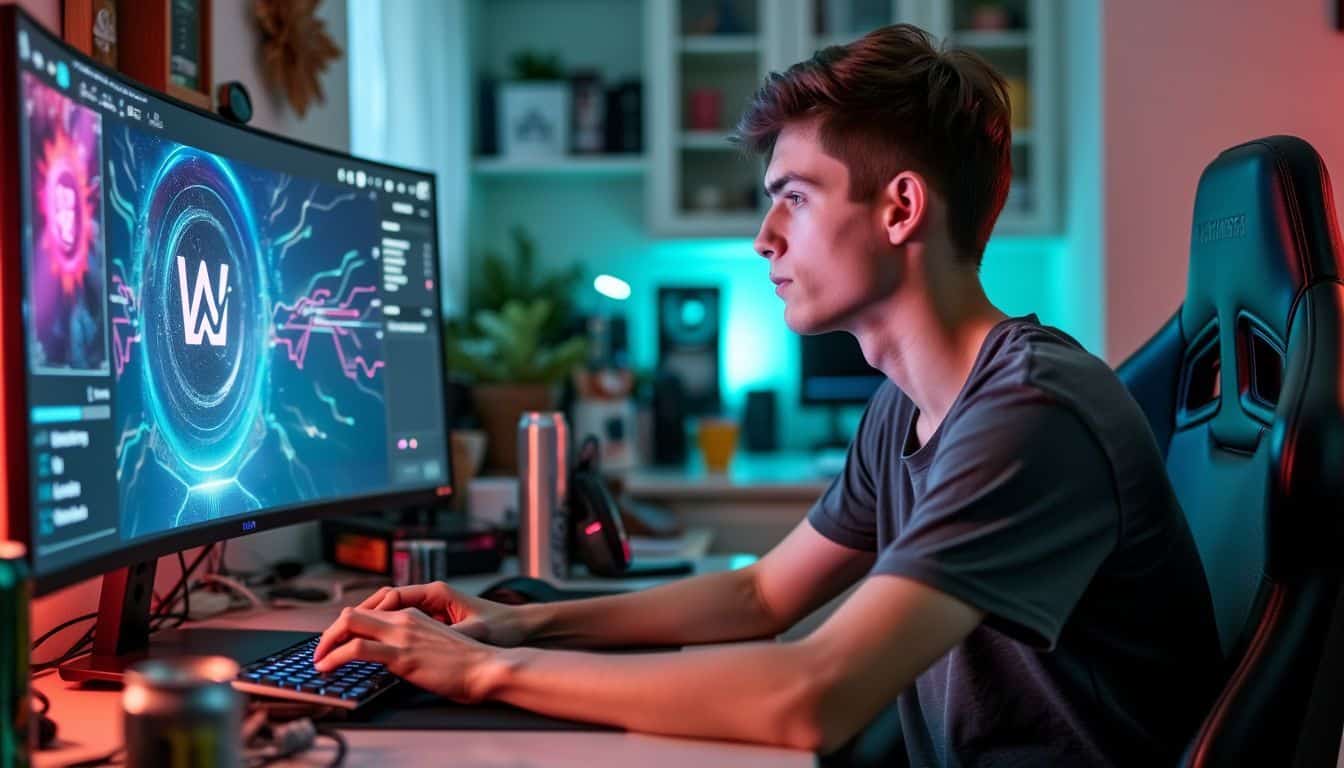
Blockchain tech is shaking up the gaming world. It’s bringing new ways to play, trade, and own digital stuff in games. From complex strategy games to the best crypto casinos, blockchain is transforming how we interact with digital entertainment.
The Role of Decentralization in Games
 Decentralization shakes up the gaming world. It takes power from big publishers and gives it to players. In blockchain games, you truly own your stuff. That sword you won? It’s yours to keep or sell.
Decentralization shakes up the gaming world. It takes power from big publishers and gives it to players. In blockchain games, you truly own your stuff. That sword you won? It’s yours to keep or sell.
No more worrying about game servers shutting down and losing everything. Smart contracts make sure the rules are fair for everyone.
Players get a say in how games grow, too. They can vote on updates or new features. It’s like being part of a club where your voice matters. This setup keeps gamers hooked and builds strong communities.
But it’s not all smooth sailing – devs must be extra careful with security. One tiny bug could mean big trouble for everyone’s digital loot.
Advantages of Using Blockchain for Game Development
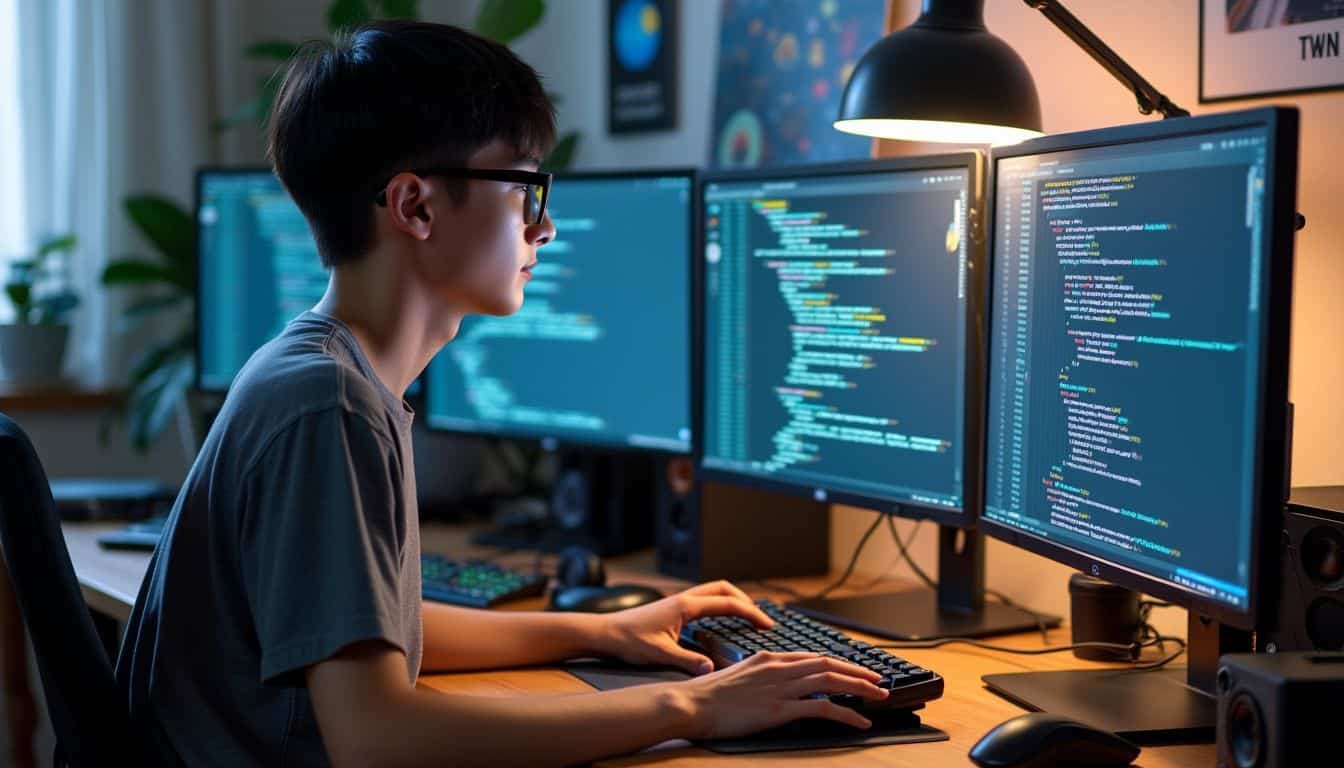
Blockchain tech brings some cool perks to game dev. It beefs up security big time, thanks to its decentralized setup and fancy encryption. No more worrying about hackers messing with your hard-earned loot! Plus, you actually own your in-game stuff.
Wanna sell that rare sword? Go for it! The blockchain keeps everything legit and transparent.
Blockchain gaming isn’t just a trend – it’s a revolution in player empowerment.
But wait, there’s more! Blockchain slashes those pesky transaction fees. No middlemen means more cash in your pocket when trading assets. And forget about shady dealings – every move is recorded for all to see.
It’s like having a built-in cheat detector! Next up, let’s dive into the nitty-gritty of creating your own blockchain game.
Key Steps to Create a Blockchain Game

Ready to dive into blockchain gaming? Let’s kick things off with some key steps. These will set you on the right path to crypto gaming success – no sweat!
Conduct Market Research in Crypto Gaming

Getting into crypto gaming? Do your homework first! Market research helps find gaps in blockchain games. Over 50,000 daily users are already playing these games – that’s a big crowd to impress.
Check out hits like CryptoKitties and Decentraland. What makes them popular? What do players enjoy?
Don’t just copy others, though. Find your own spin. Maybe blend genres or add a new gameplay twist. The blockchain gaming market is growing fast, so there’s space for fresh ideas. Chat with gamers, join online forums, and play lots of games yourself.
This hands-on approach helps you spot trends and what’s missing. Your goal? Make something that pops in this fast-growing field.
Choose the Appropriate Blockchain Platform
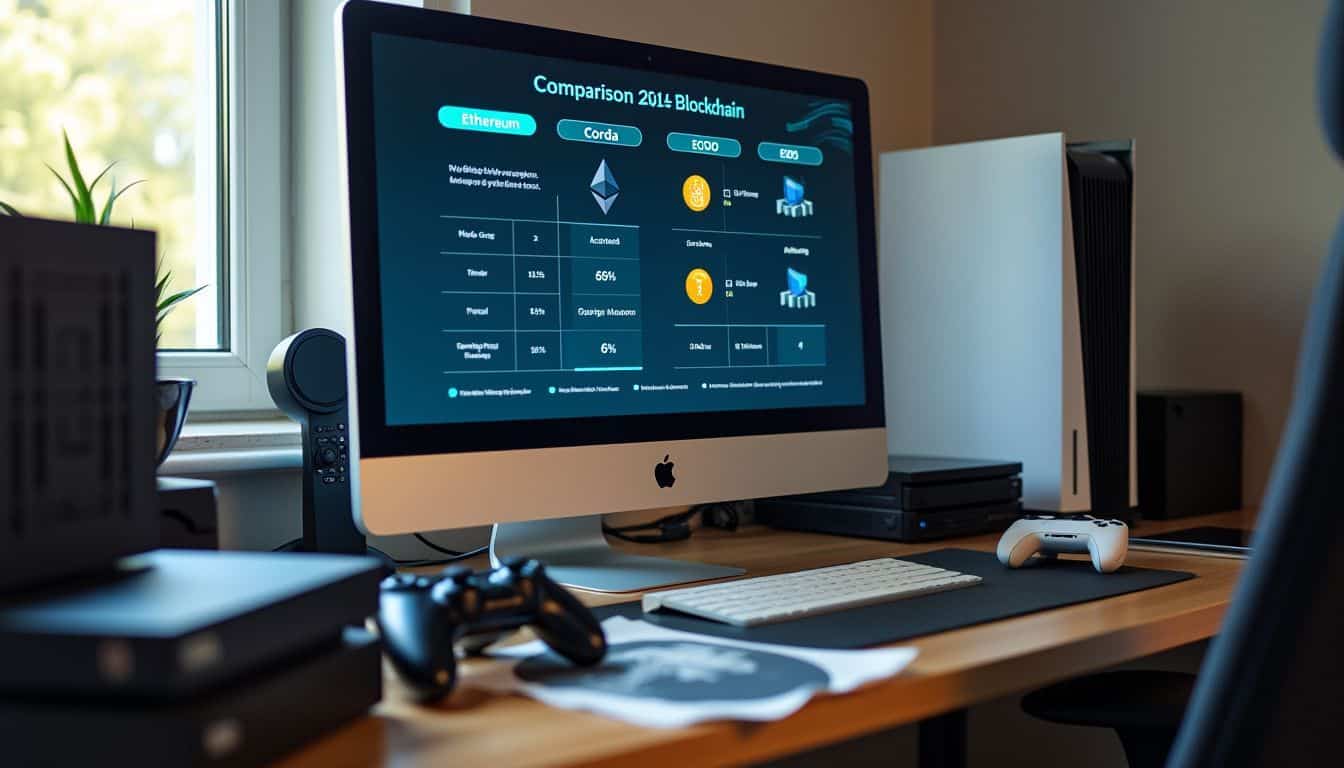
After digging into market research, it’s time to pick your blockchain platform. This choice can make or break your game. Ethereum, Corda, and EOSIO are top dogs in the blockchain gaming world.
Each has its own perks and quirks.
Think about what your game needs most. Is it speed? Scalability? Or maybe you want killer dev tools? Don’t forget to check out the competition. What makes their games tick? How can you stand out? Oh, and keep your target players in mind.
Cool, right?
Choosing the right blockchain is like picking the perfect game controller – it needs to fit your style and make every move count.
Select Suitable Software Development Kits (SDKs)
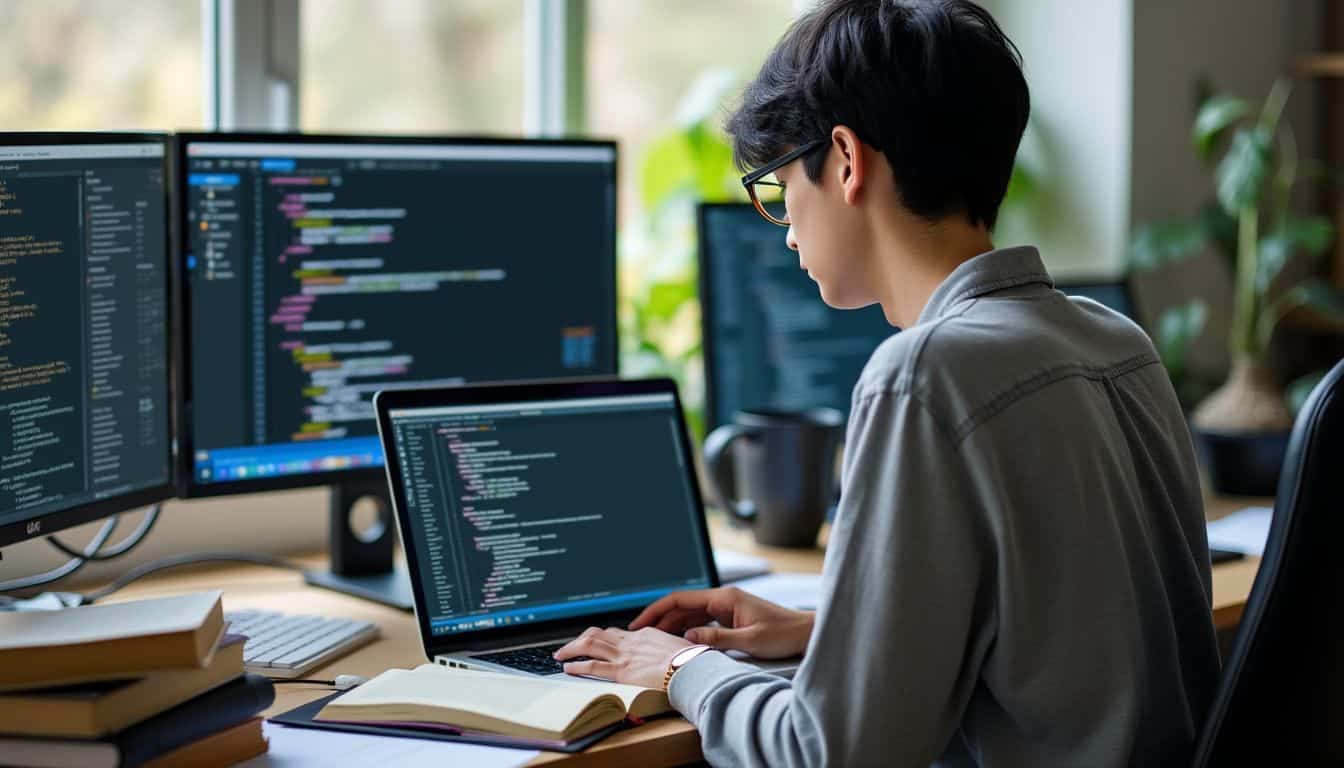
Picking the right SDKs can make or break your blockchain game. Third Web CLI is a top choice for many devs. It kicks off the game creation process with ease. Plus, it’s got hooks that let you talk to smart contracts without breaking a sweat.
But don’t stop there! Look into other options like Unity’s blockchain SDK or Enjin’s tools. They each bring something special to the table.
Your SDK should fit your game like a glove. Think about what features you need most. Do you want quick prototyping? Or maybe you’re after robust NFT support? Pick a kit that speaks your language – literally! If you’re comfy with JavaScript, stick to JS-based SDKs.
Python fan? There’s stuff for you, too. The goal is to find tools that make your coding life easier and your game cooler. Now, let’s dive into setting up your dev playground….
Building Your Blockchain Game

Ready to build your blockchain game? Let’s dive in! This step is where your ideas come to life – you’ll set up your dev environment, create smart contracts, and mesh your UI with the blockchain.
Set Up the Development Environment
Setting up your dev environment for blockchain games is a breeze with Thirdweb CLI. Just fire up your terminal and type “npx third web” to get started. It’s like magic – but for coders! Once you’re in, creating a new project is as simple as “npx third web create”.
No fuss, no muss.
Now, let’s talk tokens. ERC-1155 is the name of the game here, folks. It’s got lazy minting baked right in, which means less work for you and more fun for players. I’ve used this setup myself, and trust me, it’s a game-changer.
Your crypto gaming dreams are about to become reality!
Develop Smart Contracts for Game Mechanics
Smart contracts are the backbone of blockchain games. They’re like digital rule books that control how the game works. These contracts run on their own, making sure players can’t cheat.
They handle things like trading items, earning rewards, and keeping track of scores. To make them, you’ll need to know a coding language like Solidity.
Building smart contracts isn’t easy, but it’s key to making your game fair and fun. You’ll want to think about how players interact, what they can do, and how to keep everything secure.
It’s smart to use tools like OpenZeppelin to help with common tasks. And don’t forget to test your contracts a lot! Once they’re on the blockchain, you can’t change them easily. Oh, and if you’re looking to speed things up, consider using a layer 2 solution to make your game run smoother.
Integrate the User Interface with Blockchain
Now that we’ve got our smart contracts in place, it’s time to bring our game to life visually. Let’s integrate the user interface with blockchain. This step is where the magic happens – where pixels meet crypto!
First things first, we’ll use SvelteKit to build our UI. It’s a helpful tool that makes frontend development easier. Next, we’ll create a wallet connection component. This useful feature links our UI to the blockchain.
We’ll use the ethers library to communicate with our deployed smart contracts. And here’s a pro tip:.
Test as you build. It’s like checking your map while on a road trip – it keeps you on the right path.
We’re aiming for a smooth user experience. So, keep it simple and intuitive. Your players should focus on having fun, not struggling with difficult crypto concepts.
Essential Features for a Blockchain Game
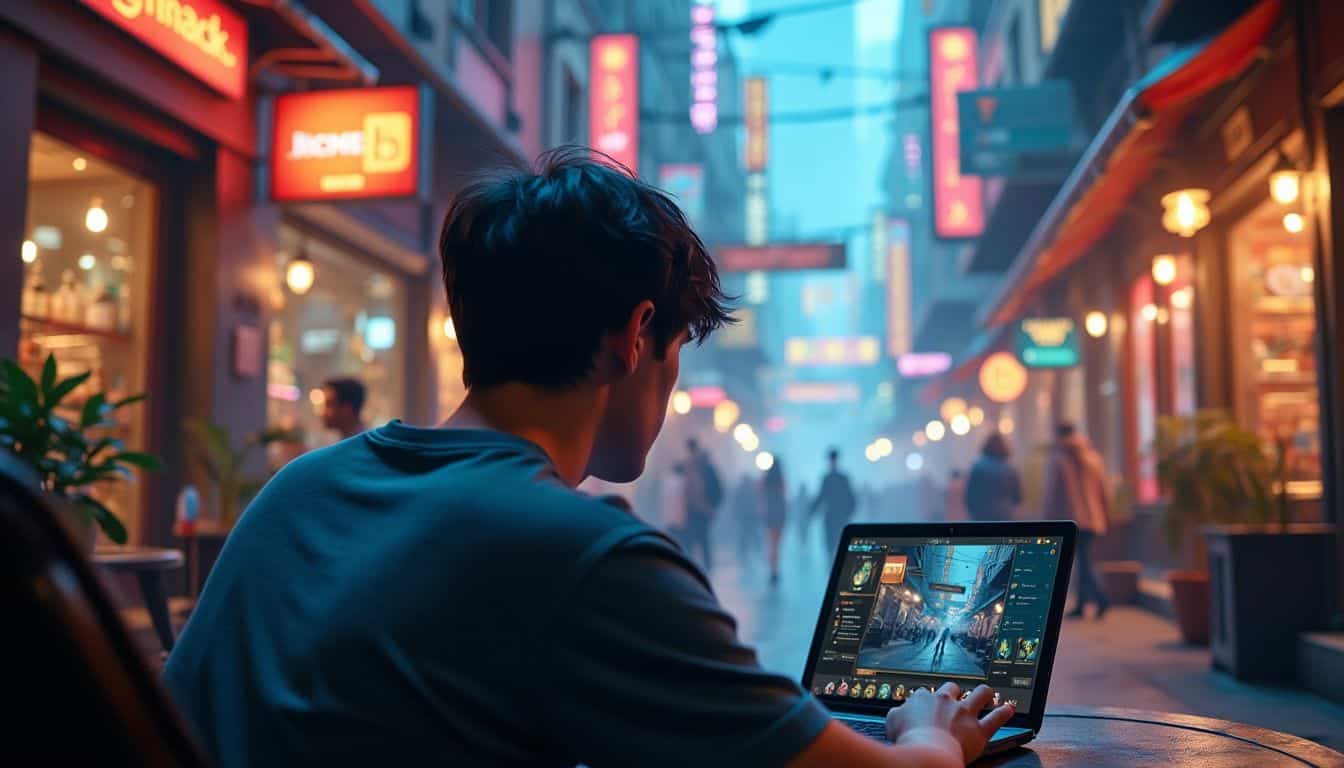
Blockchain games need some key features to rock. These include NFTs, marketplaces, and player control. Want to know more? Keep reading!
Implement NFTs for In-Game Assets
NFTs are game-changers for in-game assets. They let players truly own their digital stuff. No more losing your hard-earned loot when a game shuts down! With NFTs, you can trade that rare sword or fancy hat on open markets.
It’s like having a digital deed to your virtual goodies.
I’ve seen firsthand how NFTs spice up gaming economies. In one strategy game I played, land parcels were NFTs. Players got creative, building epic fortresses and trading prime spots.
It felt more real, knowing my castle was truly mine. Plus, the rarity of certain NFTs made collecting them a thrilling hunt. It’s a whole new level of engagement for us geeks!
Build a Decentralized Marketplace
Decentralized marketplaces are the heart of blockchain gaming. They let players truly own and trade their digital stuff.
It’s like a virtual swap meet where gamers can buy, sell, or trade NFTs they’ve earned in-game. These markets are run by smart contracts, not big companies. That means no middlemen taking a cut of your profits.
Building one isn’t a walk in the park, though. You’ll need to know your way around smart contracts and user interface design. Start with a solid plan for how items will be listed, bought, and transferred.
Then, code it up and test like crazy. Don’t forget to make it easy to use – nobody wants a clunky marketplace. With some elbow grease, you can create a space where players’ hard-earned loot becomes real value.
Ensure Player Ownership and Control
Player ownership is the heart of blockchain gaming. It’s not just a cool feature – it’s a game-changer. With blockchain, gamers truly own their in-game stuff. No more worries about losing items if a game shuts down.
Your digital swords, skins, and characters? They’re yours for keeps.
But it goes beyond just owning stuff. Players get real control too. Want to sell that rare item you found? Go for it! Blockchain lets you trade freely on open markets. Some games even let players vote on updates or new features.
It’s like being part of a gaming democracy. Pretty sweet, right? This level of ownership and control keeps players invested and engaged. It’s a win-win for both gamers and developers.
Best Practices in Blockchain Game Development

Best practices in blockchain game development can make or break your project. They’re the secret sauce that turns a good game into a great one – and keeps players coming back for more.
Ensure Scalability and Security
Scalability and security are the backbone of any blockchain game. You can’t skimp on these! Your game needs to handle loads of players without breaking a sweat. Think about using layer 2 solutions or sharding to boost performance.
And don’t forget about those pesky hackers – they’re always lurking.
Lock down your smart contracts tight. Get a pro to do a security audit. It’ll save you headaches later. Use top-notch encryption to keep player data safe. And hey, make sure your game rules are set in stone with smart contracts.
That way, everyone plays fair and square. No one likes a cheater, right?
Engage the Gaming Community Early
After nailing down your game’s security, it’s time to rally the troops. Getting gamers on board early is key. Host AMAs to build trust and show you’re not just another faceless dev team.
We’ve seen this work wonders. In our last project, we got 10,000 Discord members before launch just by being open and chatty.
Don’t stop there. Tap into influencers to spread the word. They can reach folks you can’t. Keep your community in the loop with regular updates. It’s not rocket science – people like to feel involved.
And hey, listen to their feedback. We once changed a whole game mechanic based on player input. It was a pain, but it paid off big time. The community loved it, and word spread fast.
Test and Iterate Continuously
Testing is key in blockchain game dev. It’s not just about finding bugs. It’s about making sure your game rocks. You gotta test every part – from smart contracts to user interface.
And don’t stop there. Keep testing even after launch. Why? ‘Cause crypto gaming moves fast. What works today might not work tomorrow.
Iteration is your best friend. Listen to your players. They’ll tell you what’s hot and what’s not. Maybe they want more NFTs. Or they think your marketplace is clunky. Take that feedback and run with it.
Update your game often. Fix what’s broken. Add cool new stuff. This keeps players happy and coming back for more. It’s how you stay on top in the wild world of blockchain gaming.
Advanced Topics in Blockchain Gaming
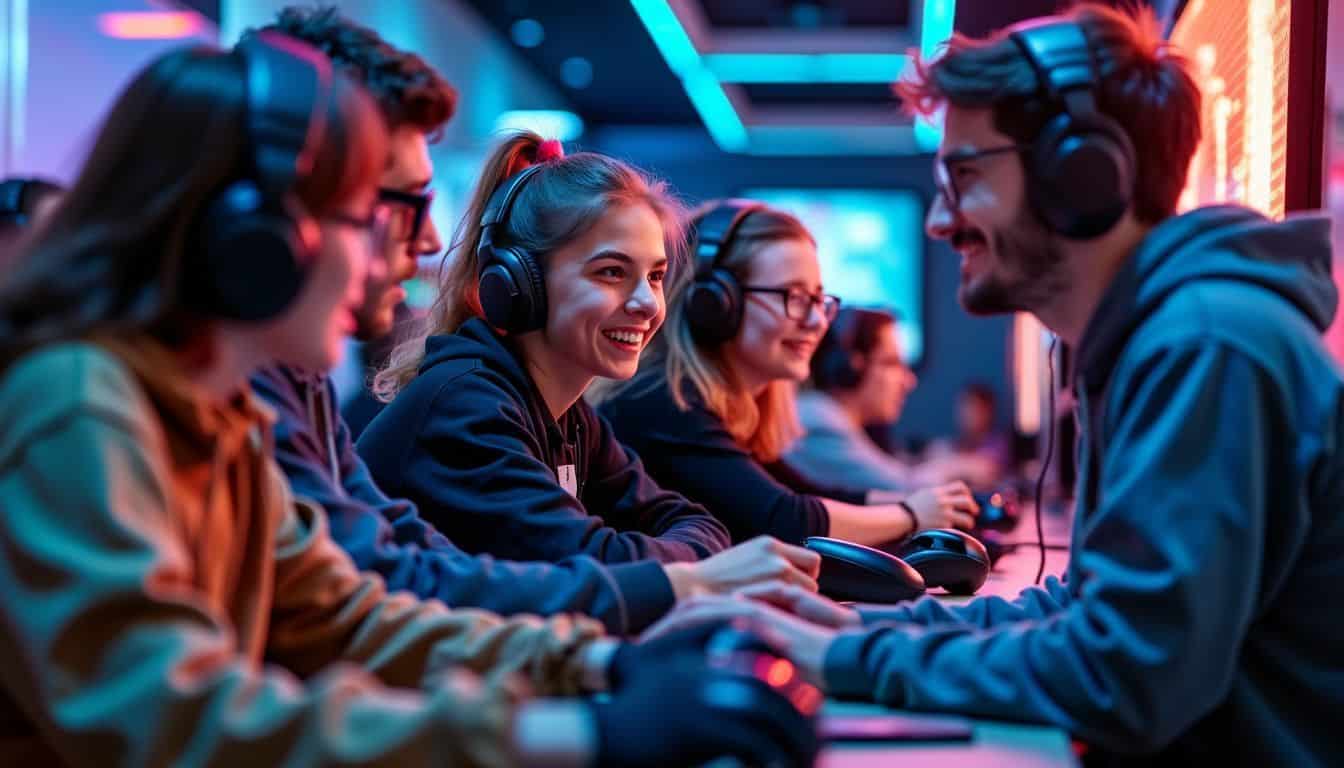
Ready to level up your blockchain game? Let’s dive into some cutting-edge stuff. We’re talking Layer 2 solutions, cross-chain magic, and AI that’ll make your game world come alive.
Implement Layer 2 Solutions for Better Performance
Layer 2 solutions are game-changers for blockchain games. They boost speed and cut costs big time. With these tools, games can handle more players and complex actions without breaking the bank.
Think smoother gameplay, faster trades, and happier gamers all around.
Scaling solutions like Polygon or Optimism work magic on transaction times. They process loads of data off the main chain, then bundle it up neatly. This means less waiting and more playing for users.
Plus, it opens doors for cooler features that were once too pricey to run. Now, devs can dream up wild ideas without worrying about sky-high gas fees slowing things down.
Manage Cross-Chain Interactions
Moving from Layer 2 solutions, we now tackle cross-chain interactions. This is where the real fun begins for blockchain game devs. Cross-chain play lets gamers use assets from different networks in one game.
It’s like mixing Lego sets to build something awesome.
I’ve seen firsthand how tricky this can be. You need smart contracts that talk to each other across chains. It’s not easy, but it’s worth it. Players love being able to use their favorite NFTs from various games.
Plus, it opens up new ways to trade and earn. Custom NFT markets that work across chains are key here. They let players swap stuff seamlessly. And with new tech like account abstraction, it’s getting easier for regular folks to join in the cross-chain fun.
Utilize AI for Dynamic Game Content
AI is changing the game in blockchain gaming. It’s not just about static content anymore. Smart algorithms can create new levels, characters, and quests on the fly. This keeps players hooked and coming back for more.
Imagine a world that grows and changes based on how you play. That’s what AI brings to the table.
But it’s not all sunshine and rainbows. AI can be tricky to get right. You need to balance fun with fairness. Too much randomness, and players might feel cheated. Too little, and the game gets boring fast.
The key is to use AI to enhance the core gameplay, not replace it. Think of it as a spice – a little goes a long way.
Addressing Common Challenges in Blockchain Gaming

Blockchain gaming throws curveballs – but don’t sweat it! From tech hiccups to legal hoops, we’ve got your back. Stick around to learn how to knock these challenges out of the park.
Solve Technical Challenges and Find Solutions
Blockchain games face unique challenges. Devs must address the Degraded Blockchain Problem directly. This issue arises when real-world apps don’t meet blockchain’s high expectations.
Smart contracts can be tricky, often causing problems for coders. But don’t worry! Solutions are available. Layer 2 tech can improve speed and reduce costs. And cross-chain interactions are important for a smooth player experience.
Testing is crucial in this crypto gaming space. Beta testers help fix issues before launch. They find bugs you might overlook. Plus, they provide valuable feedback on gameplay. A smooth user experience is essential for keeping players engaged.
As you tackle these tech challenges, you’ll create an exciting blockchain game. Next, let’s explore regulatory compliance and legal issues.
Navigate Regulatory Compliance and Legal Issues
Crypto gaming brings a heap of legal hurdles. You gotta watch out for stuff like IP rights and following the rules. It’s not just about making a cool game – you need to play nice with the law too.
Securities laws and data privacy rules like GDPR can be real headaches if you’re not careful.
Getting a blockchain lawyer on your team is a smart move. They can help you dodge legal landmines and keep your game on the right side of the law. With their know-how, you can focus on building an awesome game without worrying about legal trouble down the road.
It’s all about staying ahead of the game… legally speaking!
People Also Ask
What’s the big deal about blockchain games?
Blockchain games are the new cool kids on the block. They use cryptocurrency and non-fungible tokens (NFTs) to create unique in-game economies. Players can own, trade, and sell virtual items as real assets. It’s like turning your game time into a piggy bank!
How do I start making a blockchain game?
First, pick your poison: strategy games, MOBAs, or open-world RPGs? Then, dive into blockchain networks and infrastructure. Learn about smart contracts and tokenomics. It’s like building a digital Lego set, but way cooler.
What programming languages should I use?
Popular choices include Solidity for Ethereum-based games or Rust for other platforms. But don’t sweat it if you’re not a coding wizard. Many tools and APIs can help you create decentralized applications (dApps) without breaking a sweat.
How do I make my game user-friendly?
Keep it simple, silly! Design intuitive interfaces and smooth gameplay. Remember, not everyone’s a crypto expert. Make wallets and transactions as easy as pie. Think mobile games level of simplicity, but with blockchain superpowers.
What about monetization and profitability?
That’s where the magic happens! Set up an in-game economy with crypto tokens or NFTs. Players can buy, sell, and trade items. You can earn through transaction fees or by selling special items. It’s like running a virtual stock market inside your game.
How do I market my blockchain game?
Spread the word on social media platforms and crypto communities. Host tournaments or giveaways. Partner with influencers in the gaming and crypto worlds. It’s like throwing a party and inviting all the cool kids. Don’t forget to explain why your game is the next big thing in Web3!
References
https://blaize.tech/article-type/overview/build-a-blockchain-game-infrastructure/ (2024-03-21)
https://www.appventurez.com/blog/role-of-blockchain-in-gaming
https://www.linkedin.com/pulse/10-advantages-blockchain-game-development-business-richestsoft-egcoc
https://hedera.com/learning/gaming/blockchain-gaming
https://4irelabs.com/articles/how-to-build-a-blockchain-game/
https://www.youtube.com/watch?v=Mdpf0n-tGvE
https://softtik.com/blogs/create-your-own-blockchain-game-step-by-step-guide
https://soloway.tech/blog/how-to-use-blockchain-technology-in-gaming-industry/
https://medium.com/javarevisited/blockchain-game-development-967f8ffdda03
https://medium.com/coinmonks/blockchain-game-development-cb894710eb36
https://www.rapidinnovation.io/post/blockchain-game-development-everything-you-need-to-know
https://www.rapidinnovation.io/post/blockchain-scalability-solutions-layer-2-and-beyond
https://www.mdpi.com/2073-431X/13/1/14
https://www.rapidinnovation.io/post/developing-artificial-intelligence-in-games
https://medium.com/gamemakers/key-challenges-to-blockchain-gaming-6ed035b7c942
